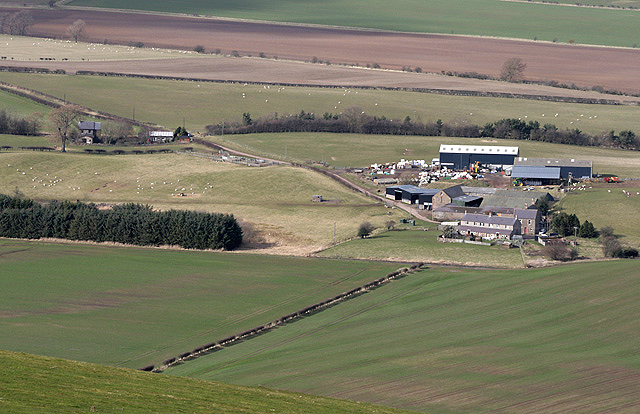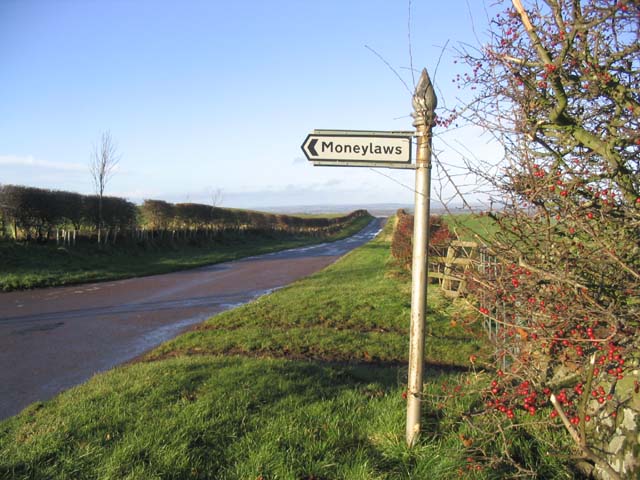Topics > Northumberland > Civil Parishes in Northumberland > Carham Civil Parish > Carham Parish, 1848
Carham Parish, 1848
CARHAM (St. Cuthbert), a parish, in the union of Glendale, W. division of Glendale ward, N. division of Northumberland, 3½ miles (W.S.W.) from Coldstream; containing 1,274 inhabitants. This place, according to Leland, was the scene of a sanguinary battle between the Saxons and the Danes, in which eleven bishops and two English counts were killed; and in 1018, a fierce conflict occurred here between the English and the Scots, the latter of whom were victorious: the loss of the English was severe, and this event, according to some writers, made so deep an impression on the mind of Aldun, Bishop of Durham, that he died of a broken heart. In 1296, the Scots, under William Wallace, encamped on a hill in the neighbourhood, since called Campfield, and reduced to ashes an abbey of Black canons, which had been founded at a period unknown, as a cell to the priory of Kirkham, in the county of York. In 1370, a battle took place between the Scots under Sir John Gordon, and the English commanded by Sir John Lelburne; in which, after an obstinate conflict, the former were victorious, and the English general and his brother were made prisoners. The parish is pleasantly situated at the north-western extremity of the county, and is bounded on the north and west by Scotland; it comprises, according to a recent survey, 10,262 acres. The surface, generally undulated, rises in some parts to a considerable elevation; and the scenery is enriched with fine plantations, and enlivened by the river Tweed, on the south bank of which the village is situated. The living is a perpetual curacy; net income, £233; patrons and impropriators, the heirs of A. Compton, Esq., of Carham Hall. The great tithes of the township of Carham have been commuted for £260, and the incumbent's for £22; the incumbent has 5½ acres of glebe. The church, erected in 1791, is a very neat edifice: in 1832, a porch, and a vestry-room, which is now used for a Sunday school, were added; and in 1839, the whole of the interior was newly arranged and repewed.
Extract from: A Topographical Dictionary of England comprising the several counties, cities, boroughs, corporate and market towns, parishes, and townships..... 7th Edition, by Samuel Lewis, London, 1848.

Co-Curate Page
Carham
- Overview About Carham Map Street View Carham or Carham On Tweed is a village in Northumberland, England. The village lies on the south side of the River Tweed about …

Co-Curate Page
Hagg
- Overview Map Street View Hagg is a hamlet in Northumberland, located close to the border with Scotland, about 2 miles south of Cornhill-on-Tweed. It primarily consists of Hagg farm and …

Co-Curate Page
Mindrum Mill Township, 1848
- MINDRUM-MILL, a township, in the parish of Carham, union of Glendale, W. division of Glendale ward, N. division of Northumberland, 6 miles (S.) from Coldstream. It comprises about 2,100 acres, …

Co-Curate Page
Moneylaws
- Overview Map Street View The adjacent hamlets of East Moneylaws and West Moneylaws in Northumberland are located close to the border with Scotland, about 8½ miles north-west of Wooler and …


Co-Curate Page
Carham
- Overview About Carham Map Street View Carham or Carham On Tweed is a village in Northumberland, England. The village lies on the south side of the River Tweed about …

Co-Curate Page
Hagg
- Overview Map Street View Hagg is a hamlet in Northumberland, located close to the border with Scotland, about 2 miles south of Cornhill-on-Tweed. It primarily consists of Hagg farm and …

Co-Curate Page
Mindrum Mill Township, 1848
- MINDRUM-MILL, a township, in the parish of Carham, union of Glendale, W. division of Glendale ward, N. division of Northumberland, 6 miles (S.) from Coldstream. It comprises about 2,100 acres, …










